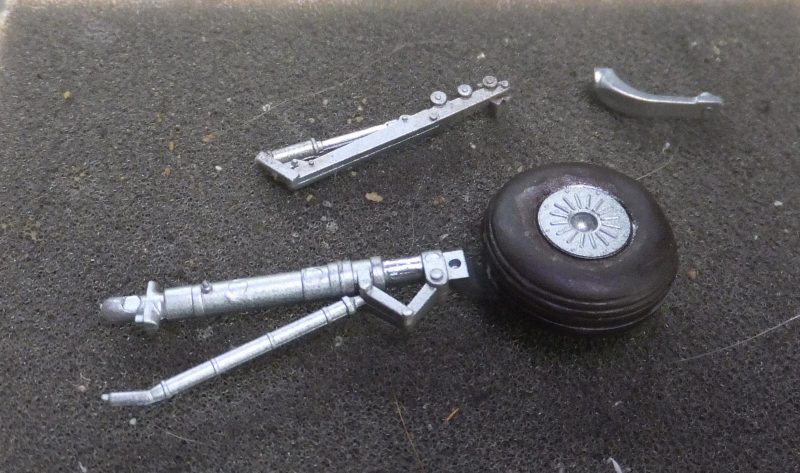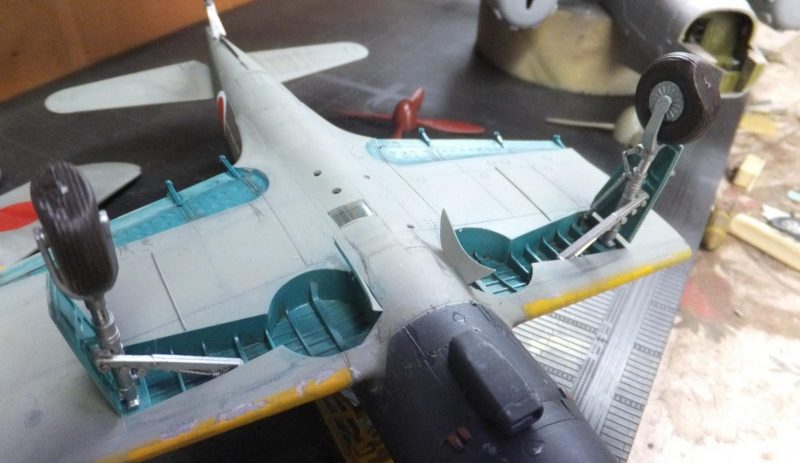Before getting started on the landing gear. First to finish the prop.
Which comprises of 5 parts. The spinner, backing plate, bearing, poly cap and the prop itself.
First to insert the poly cap into the spinner. Then the bearing cover over that.
Then slip the spinner over the front of the prop while attaching the backing plate behind the spinner.
Then paint the spinner and backing plate Red Brown.
Next is removing the fowler flaps and get them prepared to install once the landing gear is in place.
Now to work on the main gear. Starting with the strut.
-

1. Molotow chrome for the oleo
Next is the retracting actuator arm and the wheel brace.
The wheel assy which is weighted, is placed loose on the strut (it will spin for now), then the inner wheel spindle brace. and the upper outer gear door. Will leave the lower door cover off for now.
-

1. Kit wheel assy has a weighted feature from Hasegawa, nice
Being the LH side main gear assy is then installed into the LH wheel bay using the retracting actuator arm to keep it in place . The fit here is very good and will have a long lasting shelf life while parked among it's brethren for years to come.
Now both gear assy's installed.
Nice positive contact points for the main gear will last for years. Nice. The inner gear doors are installed as well.
-

1. Inner gear doors installed
Once the cement is set, the Jill is now standing on her own.
Sturdy gear for one good sized torpedo bomber. This is not a small airplane, a bit larger than a Dauntless.
Next up the torpedo, more to follow...
1 additional image. Click to enlarge.